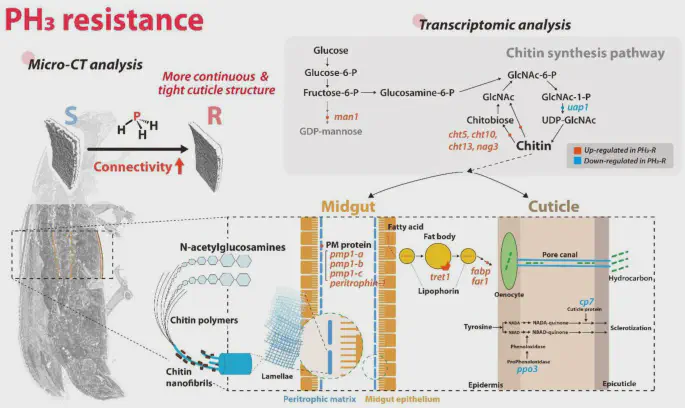Transcriptome and Micro-CT analysis unravels the cuticle modification in phosphine-resistant stored grain insect pest, Tribolium castaneum (Herbst)

Abstract
Background Phosphine (PH3) resistance in stored grain insect pests poses a significant challenge to effective pest control strategies worldwide. This study delved into understanding PH3-resistant mechanism, with the objective of informing robust and sustainable pest management strategies that could mitigate the impacts of PH3 resistance.
Results In this regard, the transcriptomic analysis identified 23 genes associated with chitin synthesis and cuticle formation, which showed significant expression in PH3-resistant (R) strains compared to susceptible strains. Micro-computed tomography (Micro-CT) revealed an extended and tighter cuticular structure in the PH3-R Tribolium castaneum than PH3-susceptible strains but with no changes in the cuticle thickness. This altered cuticle structure may reduce PH3 penetration through cuticles rather than completely closing spiracles during fumigation. It is also hypothesized to prevent water loss from the insect body, as water production decreased in PH3-R T. castaneum due to the down-regulation of the electron transport chain function. Validation of several chitin synthesis gene expression levels revealed consistent results with those of transcriptomic analysis.
Conclusion Overall, integrating physical treatments using synthetic amorphous silicates, water absorbents, and cuticle-damaging materials during PH3 fumigation is recommended for its prolonged and controlled usage in the field.